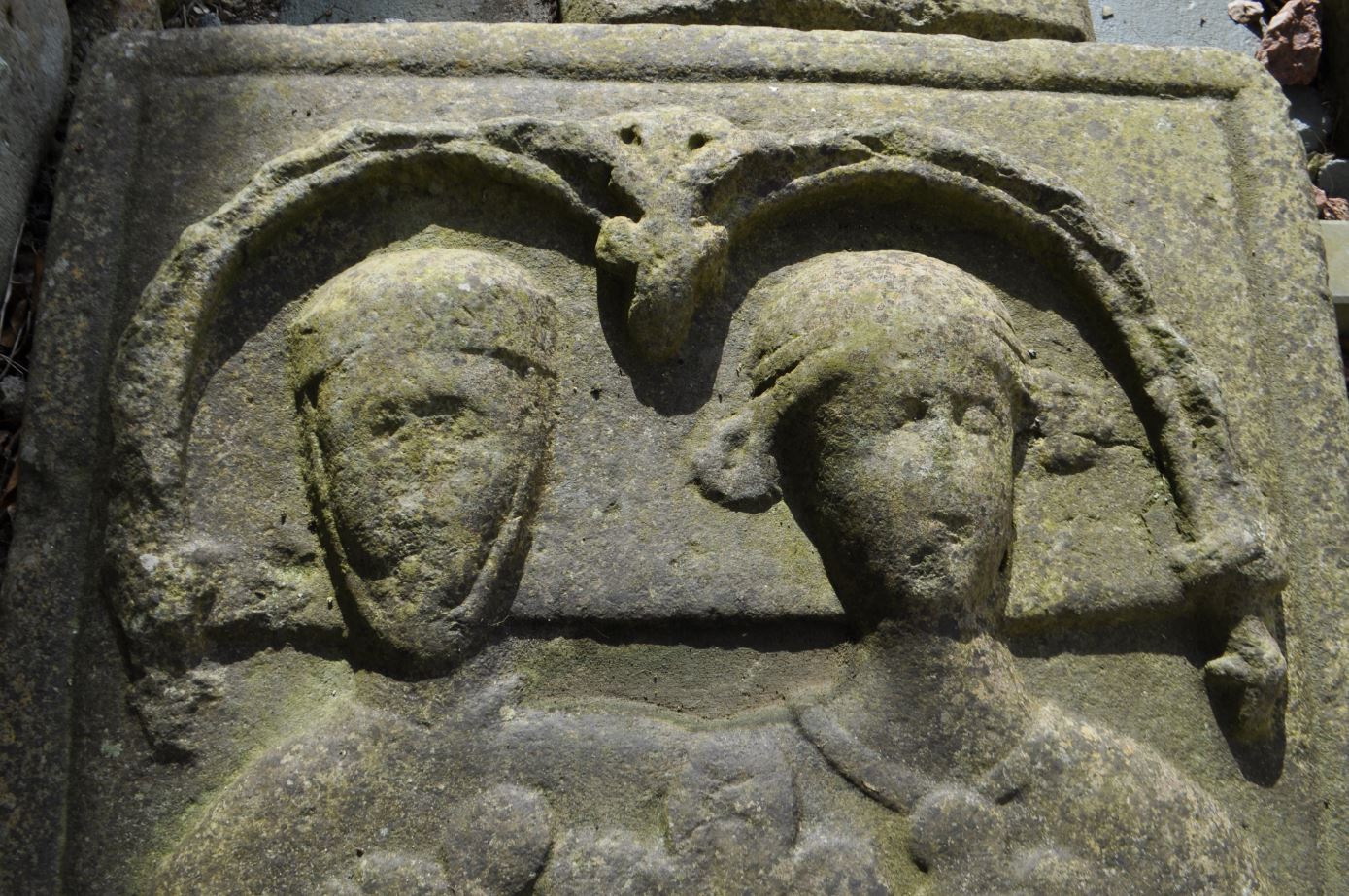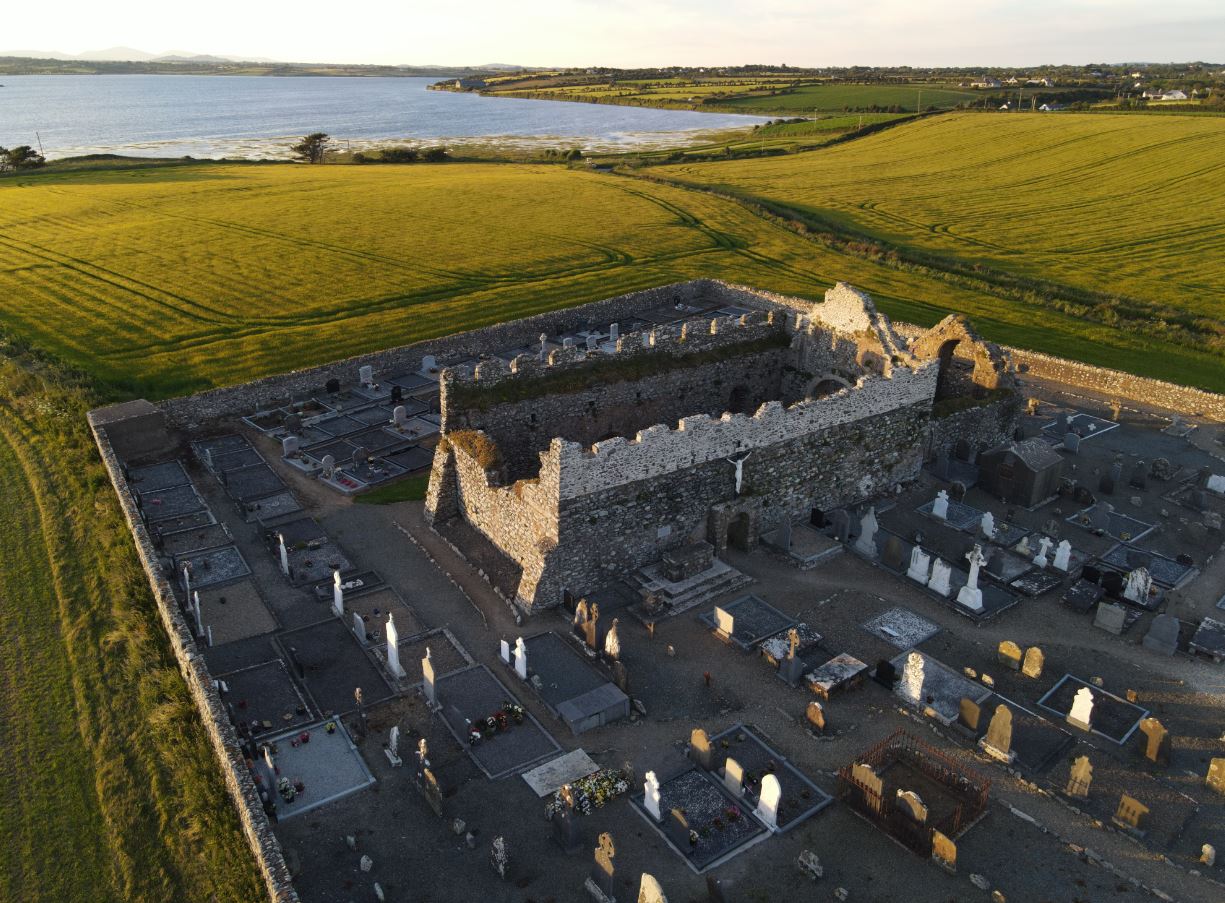1169 – the landing of the Normans at Bannow Bay
In May 1169, Diarmaid Mac Murchadha’s long-awaited force of Norman mercenaries arrived in three ships at Bannow, on the south Wexford coast. They were led by Robert fitzStephen, and comprised an army of three to four hundred knights and archers, including Hervey de Montmorency. The following day they were joined by Maurice de Prendergast, who brought two ships loaded with archers. They were quickly joined by Diarmaid and his followers. Together, they proceeded to take the Norse town of Wexford. As payment for their services, Diarmaid granted to Robert fitzStephen the town of Wexford, and to Hervey de Montmorency he gave the land around Bannow. This was just the beginning. Later that year Maurice fitzGerald arrived with further reinforcements.
Ruaidhrí Ua Conchobhair
was now forced to take decisive action. He marched on Ferns, where Diarmaid and his Norman allies were forced to take refuge in a nearby woods. Negotiations ensued and Ruaidhrí opted for a peaceful resolution. Apparently Diarmaid agreed to recognise Ruaidhrí as high-king, who in turn agreed to recognise Diarmaid as king of Leinster, on condition that the Normans would be sent back to England. Ruaidhrí should have known from previous experience that Diarmaid was not to be trusted.
In the summer of 1170 Raymond fitzGerald, better known as Raymand le Gros from the fact that he was on the large side, landed with ten knights and seventy archers at Baginbun near Bannow. They quickly built a fort on the headland that still survives today. The Irish and Norse citizens of nearby Waterford, alarmed at the latest arrival of Normans, attacked the fort. Despite being heavily outnumbered, Raymond apparently used a stampede of cattle to reverse the oncoming charge of the Waterford men, and succeeded in taking a large number of prisoners. According to one account, a Norman woman named Alice beheaded all the prisoners with an axe in revenge for the killing of her lover during the battle earlier in the day. However, according to another account it was Hervey de Montmorency who ordered their execution and had their bodies thrown over the cliff into the sea.
Soon after this event, Strongbow landed near the town of Waterford. Despite the defeat of the Waterford Norse at Baginbun, it took the Normans two days to break the defenses of Waterford town itself. To add insult to injury, the assault on the town walls was led by Raymond le Gros, the hero at Baginbun. Diarmaid Mac Murchadha arrived in time to see the fall of the town, and in fulfillment of their earlier agreement, Strongbow married his daughter Aoife.
The combined forces of Strongbow and Diarmaid now marched on Dublin. Presumably having heard of the fate of the Norse of Waterford, the Norse king of Dublin, Hasculf MacTurkill, entered negotiations through the mediation of the Archbishop of Dublin, Lorcán Ua Tuathail, who was Diarmaid’s brother-in-law. With MacTurkill distracted during the negotiations, Raymond le Gros, carried-out a surprise attack on Dublin and took the city, forcing the Norse king to flee.
Unfortunately for Diarmaid, he died suddenly at Ferns in May 1171, before he had time to enjoy his newfound success. Ruaidhrí Ua Conchobair sensed an opportunity, and together with Tighearnán Ua Ruairc, he besieged Dublin in August and September that year. This was not a simple case of Anglo-Norman versus Irish. Among those supporting Strongbow in the defense of Dublin were the Gaelic allies of Diarmaid. The 1171 siege of Dublin could have been a decisive Battle of Clontarf moment for Ruaidhrí. Instead, he again opted to negotiate a peaceful resolution. Once more, the Archbishop of Dublin, Lorcán Ua Tuathail was the mediator. Apparently he proposed that Strongbow could keep the former Norse towns of Dublin, Wexford and Waterford. In this way Ruaidhrí was effectively attempting to maintain the previous status quo, whereby the Normans would take over the towns established by the Vikings centuries earlier. However, no sooner had this agreement been made, than the Normans carried-out a surprise attack on Ruaidhri’s army and lifted the siege. With Diarmaid Mac Murchadha dead, and Ruaidhrí Ua Conchobair overwhelmed, the scene was now set for a Norman conquest of Ireland.



